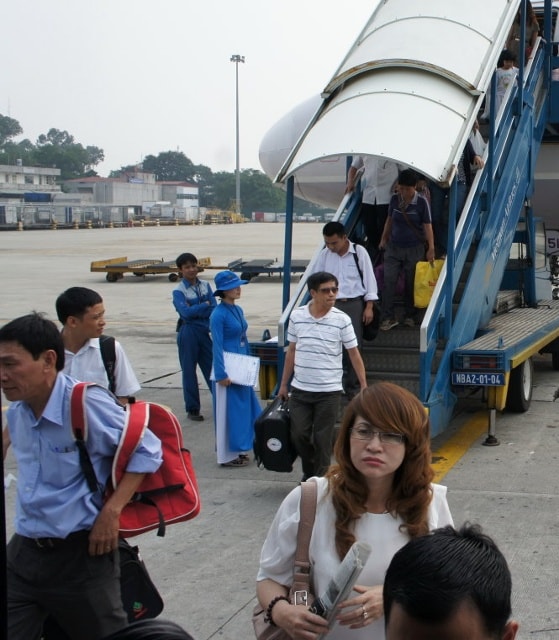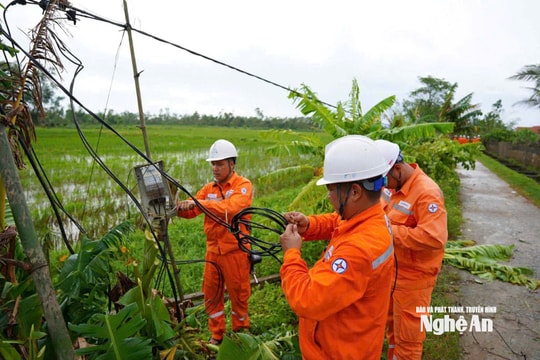Will phone calls be made on the plane?
Many countries allow passengers to make phone calls and use electronic devices when the plane has landed, is taking off, or is taxiing on the runway before entering the terminal or parking lot...
 |
| The Civil Aviation Authority of Vietnam will allow passengers to use mobile phones and portable electronic devices on planes - Photo: TTD |
The Civil Aviation Authority of Vietnam (CAA) is asking international aviation technical experts and aircraft manufacturers to consider the possibility of allowing passengers to make phone calls on planes at certain times.
This is part of the CAA's safety oversight capacity enhancement project supported by the US Federal Aviation Administration (FAA).
Use of electronic devices at certain times
According to CAA, allowing passengers to make phone calls and use electronic devices when the plane has landed, is taxiing, and is taxiing on the runway before entering the terminal or parking lot has been applied by countries in Europe, the US, and some other countries.
The European Aviation Safety Agency (EASA) and the FAA have allowed passengers on flights to use phones and other portable electronic devices at certain times since 2013.
For a long time, these two agencies have banned passengers from using phones and portable electronic devices during takeoff and landing as well as low altitude flights for fear of affecting communication equipment between pilots and the ground.
However, with the advancement of science and technology today, aircraft and means of communication between pilots and the ground are no longer so controlled.
Speaking with Tuoi Tre, Mr. Lai Xuan Thanh, Director of CAA, said that before CAA guides airlines to allow passengers to make phone calls and use portable electronic devices, aviation technical experts and aircraft manufacturers must assess the possibility of affecting the safety of the aircraft: interfering with the aircraft's operating systems and equipment, making it difficult for pilots to communicate with the ground...
These assessments will determine the current technological and technical level of the ground and airlines will have a basis to determine which types of aircraft can allow the use of phones and portable electronic devices and at what stage: taxiing on the runway preparing for take-off or just landing...
Will allow passengers to bring liquids on domestic flights
According to Mr. Thanh, in the third quarter of this year, FAA will continue to work with CAA to assess the CAA's ability to implement all issues related to safety management and supervision (the content of the project to improve aviation capacity supervision that FAA has supported CAA in the past).
Meanwhile, regarding the permission to carry liquids on domestic flights from May 1, Mr. Thanh said that the International Civil Aviation Organization (ICAO) has asked countries to decide whether or not to allow large volumes of liquids on board aircraft, based on their assessment of security risks.
The CAA has reviewed the practice at airports and found that it could facilitate passengers travelling on domestic flights to carry liquids (contained in containers with a maximum capacity of 100ml) in their hand luggage.
However, each passenger is only allowed to carry no more than 1 liter of liquid (except gels and aerosols including medicines, food or milk for infants, special dietary foods for medical purposes or liquids purchased at duty-free shops...) and must be kept in completely sealed bottles, glass jars or jars.
All bottles, jars, and containers of liquids carried by a passenger must be placed in a transparent plastic bag. Each passenger is allowed to carry only one plastic bag containing liquids.
This regulation does not apply to international flights because ICAO still applies general regulations to all member countries.
According to Tuoi Tre
| RELATED NEWS |
|---|




.jpg)


